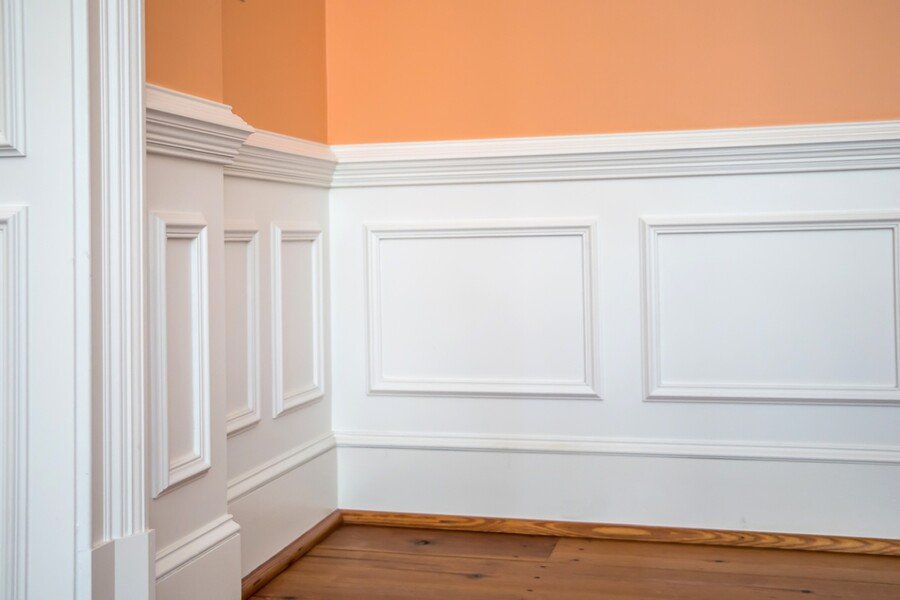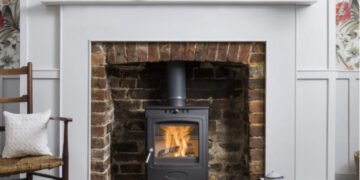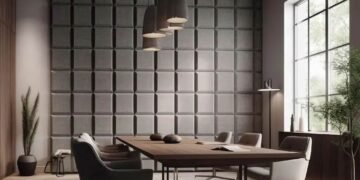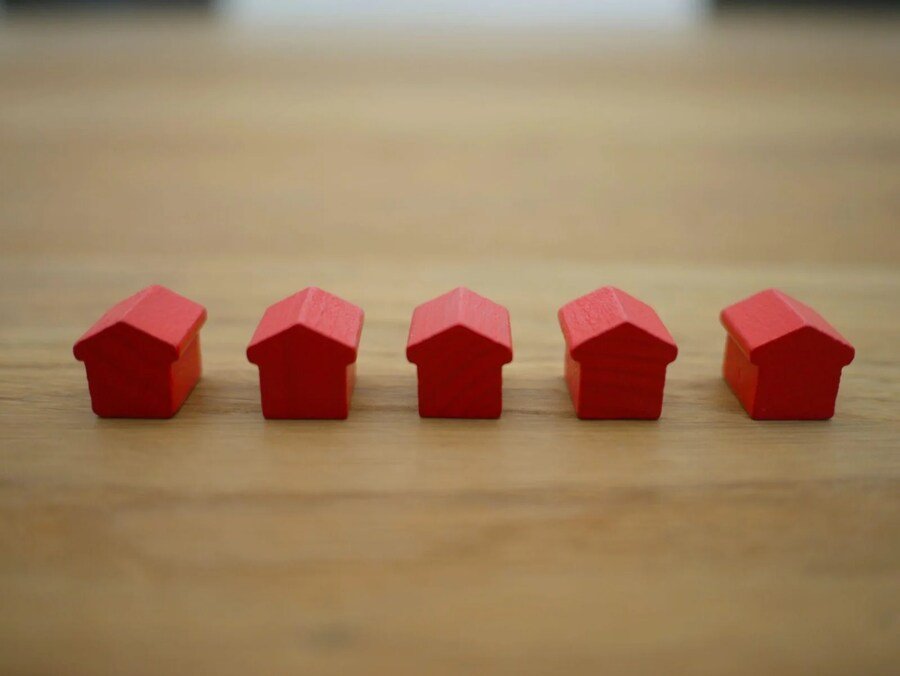Adding elegance and architectural interest to living spaces, wainscot wall panelling brings traditional charm to meet with contemporary aesthetics, making it a popular choice for enhancing home interiors. This article, presented by The Wood Veneer Hub, explores the history, types and benefits of wainscoting, and how it can elevate almost any home’s design.
The roots of wainscoting trace back to the early days of English architecture, where it started as a purely functional feature, providing insulation and protecting walls from damage. It consisted of wooden panels that extended up from the floor, often covering the lower half of the wall.
Over the centuries, it moved beyond its utilitarian origins, and by the 18th century it became a symbol of refinement and elegance in interior design. The styles and materials used developed further, creating broad variations from the elaborate raised panels in grand Victorian homes to the simpler, cleaner lines found in modern designs.
Today, wainscoting continues to blend both traditional and contemporary elements. No longer a simple means of protection and insulation, it brings a unique aesthetic value and personality to home spaces. From the richly detailed panels in classic interiors to the minimalist shaker style in modern homes, wainscoting remains a testament to its adaptable nature in the fast-paced world of interior design.
Types of Wainscoting
Wainscoting comes in various styles, each offering a unique look and feel that compliments a wide array of home designs. The perfect choice, then, depends on personal preference and the overall design theme of a home.
Raised Panel Wainscoting: This classic style, found in traditional and colonial-style homes, features panels that stand out from walls, creating a three-dimensional effect.
Flat Panel or Shaker Wainscoting: Known for its simplicity and a popular choice in contemporary and modern homes, flat panel wainscoting offers a clean, minimalist look.
Beadboard Wainscoting: Formed of vertically lined wood planks, beadboard adds a charming, rustic feel, ideal for country-style interiors or coastal homes.
Board and Batten: This type of Wainscoting involves alternating wide boards and narrow wooden strips (battens), creating a structured, geometric pattern. It’s versatile and blends naturally in various settings.
Overlay Wainscoting: A more decorative option, overlay wainscoting features panels with additional moulding on top, giving a more ornate and detailed appearance.
Materials also vary, with wood being the traditional choice. However, modern alternatives like MDF, PVC, and even tile are gaining popularity, thanks to their durability and ease of maintenance.
Benefits of Wainscoting
Wainscoting is not just a decorative element; it brings several practical advantages to any home. Its enhanced aesthetic appeal is evident, as it adds depth and character to rooms, instantly elevating the style and elegance. This improvement in appearance can also contribute to an increase in home value. Functionally, wainscoting still serves as a protective shield for walls, guarding against scuffs, scratches, and general wear and tear, particularly in high-traffic areas.
The versatility in design is another significant benefit. Branching across various styles and materials, it can seamlessly complement interior themes ranging from rustic to modern. Additionally, wainscoting continues to offer thermal insulation and can aid in reducing dampness in certain areas, harking back to its original purpose. Beyond this, it provides a clever solution for concealing imperfections in walls, ensuring a neat and finished look. This combination of functionality and aesthetic appeal makes wainscoting a popular choice for enhancing living spaces.
Design Considerations and Ideas
Successfully integrating wainscoting into your home requires careful consideration of several design elements. The style of wainscoting should complement the room’s theme, with choices like rustic beadboard for country kitchens or sleek flat panels for modern spaces. Colour and finish are vital; you can opt for tones that blend with the wall for subtlety or contrasting hues for a bold statement. The height of the wainscoting should be proportionate to the room, typically covering a third of the wall but adjustable based on the space’s dimensions.
Material choice is key for both style and functionality, especially in moisture-prone areas like bathrooms, where durable materials like PVC are preferred. Wainscoting can also be paired with architectural elements like crown moulding for a cohesive look. Personalising with unique colours or patterns adds a distinctive touch, making wainscoting a true reflection of your style and enhancing the overall appeal of your home.
Installation Tips
Installing wainscoting can be a rewarding DIY project. Here are some tips to guide you through the process:
Measure Accurately: Before purchasing materials, measure the wall space carefully. This ensures you buy the right amount of panels and moulding.
Choose the Right Tools: Essential tools include a saw (for cutting panels to size), a level (for even installation), a nail gun (for securing panels), and a caulking gun (for finishing touches).
Prepare the Walls: Ensure the walls are smooth and clean. Any bumps or irregularities can affect the final look.
Start with a Plan: Sketch out your design beforehand. Decide on the height of the wainscoting and how it will fit around corners and doors.
Test Fit Panels: Before securing panels, test fit them against the wall. This helps identify any adjustments needed.
Apply Adhesive and Secure Panels: Use a strong adhesive along with nails to secure the panels. This provides extra stability.
Finishing Touches: Once installed, fill any nail holes with wood filler and apply caulk along the edges for a seamless look. Finish with paint or stain as desired.
Maintenance and Care
Proper maintenance and care are essential to keep your wainscoting looking its best over the years. Here are some tips to help you maintain your wainscoting:
Regular Cleaning: Dust and clean your wainscoting regularly with a soft cloth or duster. For deeper cleaning, use a damp cloth with mild soap, but avoid excessive moisture, especially on wood.
Prompt Stain Removal: Address spills and stains immediately to prevent them from setting in. Use gentle cleaning agents that won’t damage the finish.
Avoid Harsh Chemicals: Stay away from abrasive cleaners and harsh chemicals that can strip paint or damage the material.
Periodic Repainting or Restaining: Depending on wear and tear, and your aesthetic preferences, consider repainting or restaining your wainscoting every few years to refresh its look.
Inspect for Damage: Regularly check for signs of damage, such as chipping, cracking, or peeling. Early detection allows for timely repairs, prolonging the life of your wainscoting.
Enhancing Your Home with Wainscoting
Wainscoting enhances both the aesthetic and functional aspects of a home. Ideal for DIY enthusiasts and design-savvy homeowners, it presents an opportunity to creatively transform living spaces. With thoughtful implementation and regular care, wainscoting remains a valuable addition to any home, blending beauty with functionality.
Recommended Posts:
















